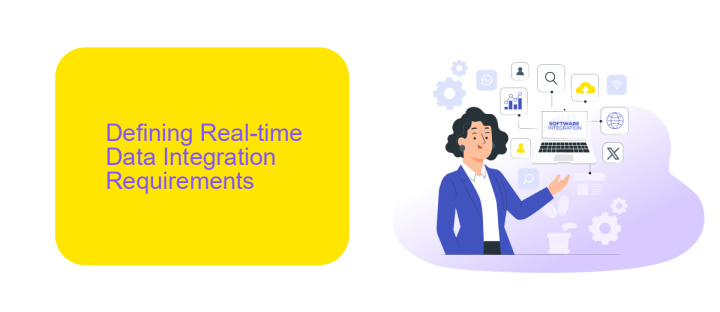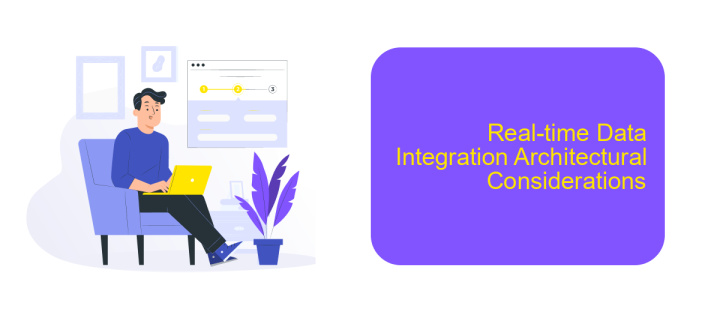Real Time Data Integration Best Practices and Architecture
In today's fast-paced digital landscape, real-time data integration is crucial for businesses seeking to maintain a competitive edge. This article explores best practices and architectural strategies for seamless data integration, ensuring timely and accurate information flow across systems. By leveraging these insights, organizations can enhance decision-making, boost operational efficiency, and drive innovation in an increasingly data-driven world.
Introduction
In the era of digital transformation, real-time data integration has become a critical component for businesses aiming to stay competitive. Real-time data integration involves the continuous synchronization of data from various sources, ensuring that the latest information is always available for decision-making processes. This approach not only enhances operational efficiency but also provides a comprehensive view of business activities.
- Improved data accuracy and consistency
- Enhanced decision-making capabilities
- Streamlined business processes
- Increased operational efficiency
One of the best practices for achieving seamless real-time data integration is utilizing robust integration platforms like ApiX-Drive. This service simplifies the process by allowing users to connect various applications and automate data flows without requiring extensive technical expertise. By implementing these strategies, businesses can ensure that they are leveraging their data to its fullest potential, thereby driving growth and innovation.
Defining Real-time Data Integration Requirements

Defining real-time data integration requirements begins with understanding the specific needs of your business. This involves identifying the types of data that need to be integrated, the sources of this data, and the frequency at which data updates are required. It's crucial to determine the latency that your system can tolerate and the level of data accuracy and consistency necessary for your operations. Additionally, consider the scalability of the integration solution to ensure it can handle increasing volumes of data as your business grows.
Once the basic requirements are clear, the next step is to evaluate tools and services that can facilitate real-time data integration. Services like ApiX-Drive offer robust solutions for connecting various data sources and automating data flows with minimal manual intervention. ApiX-Drive supports a wide range of applications and provides real-time data synchronization, ensuring that your data is always up-to-date across all platforms. By leveraging such services, businesses can streamline their data integration processes, reduce errors, and improve overall efficiency.
Best Practices for Real-time Data Integration

Real-time data integration is essential for businesses looking to make timely, informed decisions. To ensure seamless integration, it's crucial to follow best practices that enhance efficiency and reliability.
- Choose the right tools: Select integration tools that are robust and scalable. For instance, ApiX-Drive offers a user-friendly interface and supports multiple data sources, making it an excellent choice.
- Ensure data quality: Validate and clean data before integration to prevent errors and inconsistencies. Implement automated data validation processes to maintain high data quality.
- Monitor performance: Continuously monitor the performance of your data integration processes. Use monitoring tools to detect and address bottlenecks or failures promptly.
- Maintain security: Protect sensitive data by implementing strong encryption and access controls. Regularly update security protocols to safeguard against emerging threats.
- Document processes: Keep detailed documentation of your integration workflows. This aids in troubleshooting and ensures continuity in case of personnel changes.
By adhering to these best practices, businesses can achieve efficient and reliable real-time data integration, enabling them to stay competitive and responsive in a fast-paced environment.
Real-time Data Integration Architectural Considerations

When designing a real-time data integration architecture, several critical factors need to be considered to ensure seamless and efficient data flow. The architecture must support low-latency data processing and be scalable to handle varying data loads without compromising performance.
Another important consideration is data consistency and reliability. Ensuring that data is accurately and consistently integrated across systems is crucial. This can be achieved through robust error handling and data validation mechanisms.
- Scalability: The system should be able to scale horizontally to accommodate increasing data volumes.
- Latency: Minimize latency to ensure real-time data processing.
- Data Consistency: Implement mechanisms to maintain data integrity across systems.
- Error Handling: Robust error detection and recovery processes.
- Security: Ensure data is securely transmitted and stored.
Utilizing services like ApiX-Drive can simplify the integration process by providing pre-built connectors and automation tools. ApiX-Drive allows for easy setup and management of real-time data integrations, ensuring that data flows seamlessly between applications with minimal manual intervention.
- Automate the work of an online store or landing
- Empower through integration
- Don't spend money on programmers and integrators
- Save time by automating routine tasks
Scalability and Performance Considerations
Ensuring scalability and performance in real-time data integration requires a strategic approach to architecture and resource allocation. One of the key considerations is the ability to handle increasing volumes of data without compromising speed or reliability. This can be achieved through distributed systems that allow for horizontal scaling, where more nodes can be added to manage the load. Additionally, implementing efficient data partitioning and sharding techniques can help distribute the data evenly across the system, reducing bottlenecks and improving access times.
Another critical factor is the optimization of data processing pipelines. Utilizing services like ApiX-Drive can simplify the setup and management of these integrations, ensuring they are both scalable and performant. ApiX-Drive offers automated workflows that can handle large volumes of data in real-time, allowing for seamless data flow between systems. Monitoring and performance tuning are also essential; regularly reviewing system metrics and making adjustments as needed can prevent performance degradation over time. By combining these strategies, organizations can achieve a robust and efficient real-time data integration architecture.
FAQ
What is real-time data integration?
What are the key benefits of real-time data integration?
What are the best practices for implementing real-time data integration?
How can I ensure data quality and consistency in real-time data integration?
What tools or services can help with setting up real-time data integration?
Routine tasks take a lot of time from employees? Do they burn out, do not have enough working day for the main duties and important things? Do you understand that the only way out of this situation in modern realities is automation? Try Apix-Drive for free and make sure that the online connector in 5 minutes of setting up integration will remove a significant part of the routine from your life and free up time for you and your employees.


